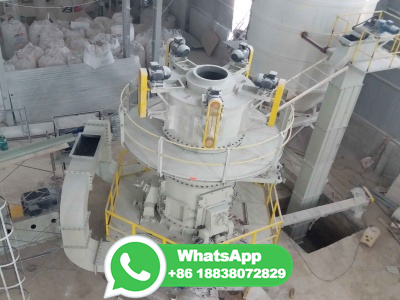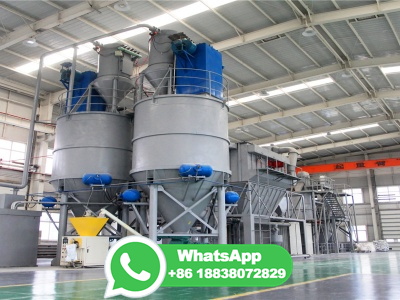Coal Seam Gas Wellhead Gas Compression LinkedIn
Clisby Engineering works closely with many upstream gas operators, principally designing and supplying process equipment. Clisby has focused particularly within the significant Australian Coal ...

Clisby Engineering works closely with many upstream gas operators, principally designing and supplying process equipment. Clisby has focused particularly within the significant Australian Coal ...

The China national coal mining depth is going deeper and deeper as the average annual rate of 1050 m [20].The mining depth of many coal mines in MidEast of China has reached m below surface ( 800 m in Huaibei, 850 m in Huainan, and 1000 m in Xuzhou).At these mining depths, the coal seam overburden stress ranges from 22 to 33 MPa and the coal seam gas pressure and gas content ...

The ISG process is a chemical conversion from solid coal to gas. For the reactions to commence, air is introduced through the inlet well and an initiation device is used to create very high temperatures. ... The area in the coal seam where the gasification takes place is referred to as the gasifier chamber and the reactions that form syngas ...

The results show that the evolution process of gas pressure in coal seam boreholes can be divided into two stages. In the first stage, the gas pressure increases rapidly, and the pressure change rate decreases continuously. In the second stage, the gas pressure is slow and stable, and the pressure change rate tends to 0.

Coalbed methane ( CBM or coalbed methane ), [1] coalbed gas, or coal seam gas ( CSG [1]) is a form of natural gas extracted from coal beds. [2] In recent decades it has become an important source of energy in United States, Canada, Australia, and other countries. The term refers to methane absorbed into the solid matrix of the coal.

FD mechanism in coal seam underestimated the gas diffusion in coal seam and consequently, overestimated the reaction rate of coal seam. The diffusion problem was corresponded with the theory about the diffusioncontrolled reaction of a coal particle combustion [18, 42]. Therefore, TD diffusion was applied in the following investigations.

Coalbed methane (CBM), is also known as coalbed gas and coal seam gas/methane (CSG/CSM), which are terms referring to the unconventional natural gas resource stored in coal beds and are expected to be an important energy resource of global significance in the future (Rightmire 1984; Rice 1993; Flores 1998, 2013; Palmer 2010; Yang and Liu 2021). ...

The results suggest that the unknown function identification method for the differential equation, which avoids measurement and analysis of the pore and fissure structures of coal samples, accurately and directly obtains the change trend of desorptiondiffusion sources in the process of gas seepage and provides a new idea for the study of the ...

The utilization of coal seam gas in China, which is the world's largest global warming gas emitter and energy consumer, has increased due to government subsidies and the pressure of carbon reduction. China is rich in coal seam gas resources (around 36 trillion m 3), which are mainly located in North (%) and Northwest China (%) (NEAC ...

1. Introduction. Development and commercialization of coal seam gas (CSG) deposits has primarily occurred within the past 30 years in countries such as USA, Australia, Canada, China, and India [1].CSG originates from biologically and microbial transformed organic matter that has undergone geological processes [2].Typically, the gas reserves are located in coal seams which are several hundred ...

Introduction. As the companion of coal seam, coal mine gas (CMG) is a major hazard source to coal mining practice. During the mining process, gas disasters such as gas explosion, gas combustion, and coal and gas outburst may occur, resulting in serious casualties and property losses. 1, 2 Especially when it enters deep mining, stress and gas pressure rise markedly, while permeability of the ...

Gas extraction is the main method to reduce gas content and eliminate gas accidents, and due to the influence of mining stress in the coal seam mining process, there are elastic damage zones and plastic damage zones of coal seams [3, 7]. Therefore, in order to improve the efficiency of gas extraction, it is necessary to study the elastic ...

Coal seam gas collects in the coal seams by bonding to the surface of coal particles. The coal seams are generally filled with water, and it is the pressure of the water that keeps the gas as a thin film on the surface of the coal. CSG is extracted through wells drilled into coal seams.

In order to reveal the process and mechanism of gas flow in a lowpermeability coal seam, a new multiplerelaxationtime lattice Boltzmann method (MRTLBM) model of gas migration in coal micro/nanopores based on Langmuir monolayer adsorption theory, the slip boundary scheme and Bosanquet effective viscosity was established. The software MATLAB was used to carry out the simulation study of ...

In the process of coal seam drilling and gas drainage, the gas pressure around the coal seam and the stress of the coal and rock mass change, resulting in a change in coal porosity. A mechanically overexcavated cavity diameter of 1200 mm with a length of 2 m was selected to investigate the influence of the initial porosity on the gas drainage ...

1. Introduction. Coal seam gas (CSG) is an unconventional resource which has been exploited in recent years as a substitute for coal and oil [1].Gas extraction involves decreasing the water pressure which holds the methane in place in the coal cleats [2, 3].Through this process, significant volumes of associated water are produced [4].This associated water could be a valuable resource; however ...

Natural cavitation begins by drilling a targeted coal seam with air, gas, or mist. The bit is then lifted above the seam and the well is shut in. ... Jetting cavitation uses hydraulic pressure to direct a jet of gas and water directly toward the coal face. This process may be performed to facilitate a cavity when other cavitation methods have ...

Exploration of alternative energy resources has become essential to fulfill an everincreasing energy demand. One potential source of energy is extraction of unconventional gases, such as basincentered gas, tight gas, coal seam gas (CSG) and shale gas [1]. The extraction of natural gas from low permeability unconventional reservoirs requires ...

The process of drilling holes to extract gas disrupts the coal seam's pressure equilibrium, causing the adsorbed gas in the pore space to desorb and become free gas, and the entire process to be transmitted to the fissure system via diffusionseepage [26,27,28]. The volume of gas exchange per unit volume between the coal matrix and the ...

Gas flow in a coal seam is a complex process due to the complicated coal structure and the sorption characteristics of coal to adsorbable gas (such as carbon dioxide and methane). It is essential to understand the gas migration patterns for different fields of engineering, such as CBM exploitation, underground coal mine gas drainage, and CO2 geosequestration. Many factors influence gas ...

Underground coal gasification (UCG) is an industrial process which converts coal into product gas. UCG is an insitu gasification process, carried out in nonmined coal seams using injection of oxidants and steam. The product gas is brought to the surface through production wells drilled from the surface. The predominant product gases are methane, hydrogen, carbon monoxide and carbon dioxide.

The measurement of gas content in coal seam by means of indirect method involves heavy workload, long period, high cost and complicated operation and a proneness of negative values in the process of measuring gas absorption constant. To address these problems, the gas basic parameters and coal quality indexes of 90 coal samples from 90 coal mines in 13 provinces of China are determined ...

The selection of proppants is critical in the coal seam gas extraction process, where the softer coal rock surface restricts the use of high strength proppants due to its vulnerability of embedding into the surface. 2) coal properties elastic modulus of coal is the most important factor deciding the proppant behaviour in the extraction ...

The major steps for this drilling and completion technique are. Drilling the production hole to the top of the coal seam. Running and cementing casing. Drilling a hole through the coal seam. Increasing the diameter of the hole by a technique known as underreaming (Fig. 1)

List of Pros of Coal Seam Gas. 1. It is Effective. There is no doubt that coal seam gas actually works. Unlike solar power or wind turbines, coal seam gas is very costeffective and tremendously efficient. This means that rather than having to rely on a method that is very expensive or not guaranteed to work, we can simply use coal seam gas and ...

Pad Drilling (Surat Basin) The majority of Arrow Energy's coal seams have Total Vertical Depths of less than 900 m and as shallow as 200 m. These shallow depths create a problem when planning well spacing for gas drainage. The optimum spacing required for vertical wells is between 700 and 1200 meters.

Coalbed gas content is the most important parameter for forecasting and preventing the occurrence of coal and gas outburst. However, existing methods have difficulty obtaining the coalbed gas content accurately. In this study, a numerical calculation model for the rapid estimation of coal seam gas content was established based on the characteristic values of gas desorption at specific exposure ...

To study the differences between various gas injection sources in the process of coal seam methane replacement, experimental research was conducted to study the influences of different gas injection sources and gas injection ratios on coal seam methane replacement by considering the strong adsorption gas CO 2 and the weak adsorption gas N experimental results show that the temperature ...

CBM refers to methane that is found in and extracted from coal seams. It is formed during the coalification process, which is the transformation of organic plant material into coal. CBM is also known as virgin coal seam methane or coal seam gas, and is widely considered an "unconventional" source of natural gas.

Coal seam gas overall process The development of unconventional gas resources such as shale gas and coal seam gas has boomed over the past few years [1]. Coal seam gas (CSG) also known as coal bed methane (CBM) is comprised of natural gas that is extracted from low to high rank coal beds [2], [3].

The result shows, within 40 days' drainage after ultrasonic antireflection in coal seam, the average gas concentration of single borehole in the experimental group increased by % ∼ % than that in control group, the average borehole gas flowrate has a 20% ∼106% improvement over the control group, and the pure methane production in ...

The amount of gas retained in coal depends on a number of factors such as the rank of coal, the depth of burial, the immediate roof and floor to the coal seam, geologic anomalies, tectonic pressures, and temperature prevailing at the end of the coalification process. In general, the higher the rank of coal and the greater the depth of coal seam ...